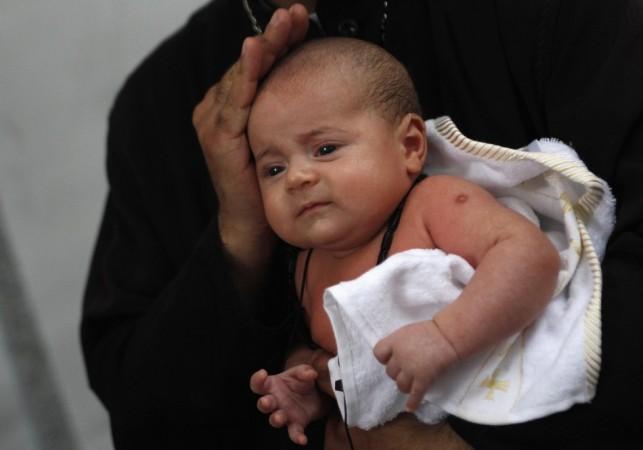
The mystery surrounding a two-and-half-month-old boy, who has been undergoing treatment over claims that he caught fire as many as four times since he was born, has deepened with the tests conducted on the baby disproving Spontaneous Human Combustion Theory (SHC).
Rahul, a native of Tindivanam, Tamil Nadu was recently admitted to Kilpauk Medical College and Hospital for burns reportedly caused by a rare medical phenomenon known as SHC wherein a person catches fire due to emission of inflammable substances through the body.
As many as 30 tests, including neurosonogram, sweat, ultrasonogram, blood, urine, x-ray, genetic and chromosome analysis etc were conducted over the last few days to find out the cause of the baby's ailment but the results were normal.
"We are awaiting the report of just one test to determine the ketone levels in the blood and we will receive it on Tuesday," Dr R Narayana Babu, head of the paediatrics department, Kilpauk Medical College, told The New Indian Express.
"What we have done is more than a research. We have not come to a conclusion. We don't expect much from the report of ketone levels that we are awaiting. We have just gone by what the parents and grandmother told us about the history of the baby. If what they said is true, then it is spontaneous human combustion," added the doctor.
Babu had earlier told the Deccan Chronicle that "The body burns spontaneously due to combustible gases emitting from the patient's body, without any external source of ignition. Clothes and other things nearby that are inflammable may also catch fire."
"An episode may or may not recur. It's like any other burn injury, with the likelihood of scars and secondary infections. Plastic surgery is also expected to be done. The relatives or parents have to always keep an eye on the baby. Matchsticks, crackers or anything that can catch fire should not be kept near him," he added.
Only about 200 cases of SHC have been reported in the last three centuries, the latest being in February this year when a 65-year-old man from Muldrow, Okla, was believed to have died of SHC. His body was found charred without any source of fire.
Is the Child a Victim of Abuse?
With no evidence of SHC despite several tests and special investigation by a team from Sastra University, the possibility of an accident or abuse for the cause of the burns has come into the picture.
"I still stand by what I said that there is no such thing as spontaneous human combustion. The possibility of child abuse exists and needs to be explored," Dr J Jagan Mohan, head of the burns department at KMCH, told Health India.. The doctor had earlier called SHC theory as a 'hoax'.
Is Spontaneous Human Combustion a Hoax?
Spontaneous Human Combustion (SHC) is a rare medical condition in which a body catches fire without any external source believed to be caused by the emission of inflammable gas.
According to History website, the first account of the SHC dates back to 1641 and the phenomenon gained wider exposure in the 19th century after popular author Charles Dickens used it to kill off one of the characters in his novel "Bleak House." http://www.history.com/news/ask-history/is-spontaneous-human-combustion-real
People have been debating whether the human body can spontaneously burn without an external source. Scientists don't buy the SHC theory, arguing that the human body is composed of mostly water and there are remote chances of it catching fire by itself despite the presence of fat tissue and methane gas.
According to History website, "believers point to the fact that the human body has to reach a temperature of roughly 3,000 degrees in order to be reduced to ashes. Unless SHC were a genuine factor, it seems impossible that furniture would not burn as well. Proposed causes of the supposed phenomenon include bacteria, static electricity, obesity, stress and - most consistently - excessive consumption of alcohol, but none have been substantiated by science so far."
"One recent hypothesis comes from British biologist Brian J. Ford, who in August 2012 described his experiments with combustion in the magazine New Scientist. According to Ford, a buildup of acetone in the body (which can result from alcoholism, diabetes or a specific kind of diet) can lead to spontaneous combustion," it added.













